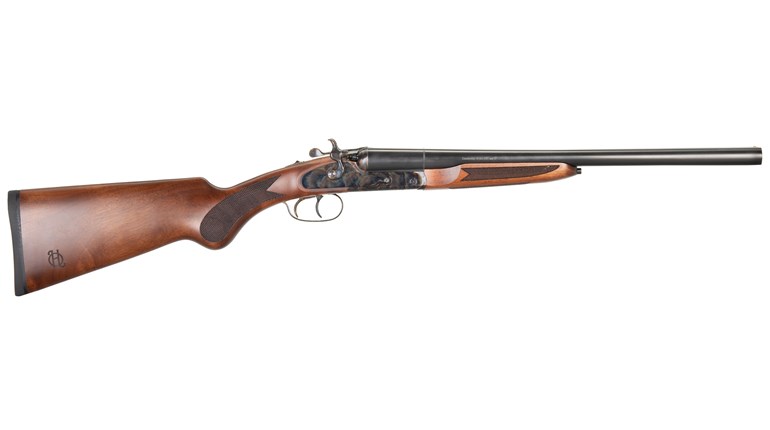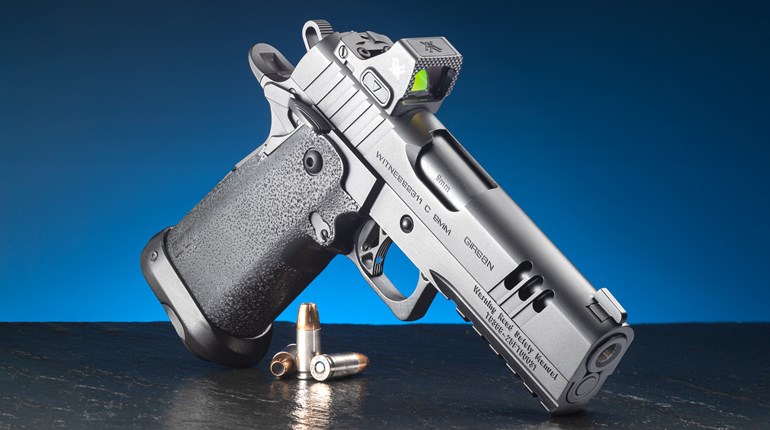
Often, the most vexing of problems have the simplest of solutions. Until recently, with the introduction of several new revolvers, the semi-automatic pistol had nearly vanquished the wheel gun. The reasons were many: greater firepower, faster reloads, less felt recoil, better ergonomics, easier concealment and, these days, at equally good reliability. The semi-auto seems to have it all over the revolver except for one crucial thing and then only for a portion of the market. The semi-automatic requires the user have the ability to rack the slide.
You have to rack the slide in order to chamber the first round, or clear jams or make the weapon safe/unload without shooting it empty.
It seems like no big deal to most of us, but it’s a very big deal to a surprisingly large portion of the market. We’re not talking about petite women here. It’s a bigger market segment than that: The best descriptor is those of lesser hand strength. It might be a woman; it might be a man. It may be someone with a disability, from chronic arthritis, to a war injury to a birth defect to simple old age. The cards aren’t always dealt fairly, and not everyone can easily manipulate the type of handgun they’d like to use. Further, those of lesser hand strength also tend to represent a particularly vulnerable subset of the population. The lack of hand strength may suggest the person is smaller, older or physically challenged, all prime inducements to criminal attack. Such people most need the best defense tools available to them.
Tip-up-barrel pistols, like Beretta’s M86 Cheetah, offered a solution in that the first round was inserted directly into the chamber, obviating racking the slide. However, the design couldn’t handle cartridges more powerful than the .380 ACP., which many consider the minimum needed for self-defense chamberings.
What to do? What to do? Enter the Handi-Racker. This simple device fits over the top of the muzzle end of your slide, extending beyond it and allowing you to rack your pistol against any hard surface.
The Handi-Racker comes in two sizes, sold separately: orange “Full” for larger pistols, and green “Compact” for smaller pistols. Each unit has two different slide tunnels, each extending from one edge to the center. If your slide is 13/16 of an inch or narrower, use the green Handi-Racker. If it’s larger than 13/16 of an inch, use the orange one. Between the two, they fit 95 percent of carry pistols.
Place the Handi-Racker with the appropriate-size tunnel over the slide, but be careful not to place your hand in front of the muzzle. (A cut-out slot will accommodate clearance of any front-sight blade.) Apply light pressure to hold it in place, then place the front of the Handi-Racker against any hard surface. Holding the pistol in you strong hand with your finger off the trigger, now just push in. You’ll have your weight behind the gun and easily be able to rack the slide. Use the slide stop to lock it open if there’s no empty magazine present. Rack it several times if you need to clear a jam. Obviously, it’s best to do it against an exterior wall near a corner, for safety. Once locked open, and of course on the range with a proper backstop, a magazine can be inserted and the pistol charged using the slide stop.
When tried, the Handi-Racker worked exactly as advertised. It was simple to apply and offered a terrific mechanical advantage. The device is lightweight and appears durable, too. The lone concern I had was using it at the range. Most places insist that the gun be pointed downrange during any slide manipulations. The only vertical hard surface at a range booth might be the edge of the shooting table, but those are often light or on wheels, thus not offering the fixed or stable hard surface you’d need. 
I spoke to company owner Chris McAninch, who said that firearm instructors are among his best customers. He said some ranges permanently mount Handi-Rackers for shooters’ convenience. He also pointed out that there are few things as disquieting and potentially dangerous as someone wrestling with a gun, trying to rack the slide and giving only secondary consideration to where the muzzle is pointing. With that in mind, some ranges and instructors are only too happy to allow the use of the device on a horizontal surface such as a tabletop. My advice is to always show and explain to the range officer the Handi-Racker and get permission as to how it can be used at that particular range.
Smith & Wesson and Walther are two major gun companies that have recently worked to address the problem of slide manipulation by those lacking in hand strength. That tells you it’s no small consideration, and with an aging population and more women taking up shooting, the Handi-Racker is the right accessory at the right time.
MSRP on the Handi-Racker is $24.99. For more information, visit the company's website: handi-racker.com.






































